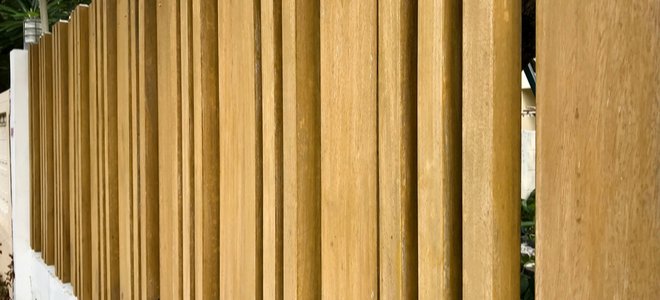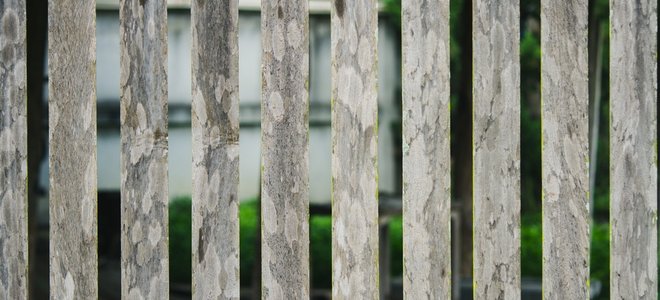
Privacy fences come in two main styles—the solid fence and the shadowbox or alternate board fence. The solid fence is designed to create a little distance between you and noisy neighbors, giving you much-desired privacy and security. The alternate board fence is meant to ensure privacy but with space for air circulation.
Regardless of the type of fence you choose, consider the appropriate gap size between your fence boards. Fence boards expand and contract with temperature changes, so failure to consider these changes in your planning might leave your barrier vulnerable to damage in the long run.
Components of a Privacy Wood Fence
A privacy wood fence comprises several components: posts, boards/pickets, and backer rails.
Posts are like the backbone of a fence. They’re usually laid vertically on holes dug on the ground and supported with concrete. Poles need to be properly applied to ensure a firm and stable fence. Wood posts used for privacy fencing are usually 4x4s, with post height varying depending on the fence height. (Total post height, in this case, refers to the height of the post before ground insertion.)
Backer rails run horizontally between adjacent posts. The backer rails are connected to the posts using fasteners. Fasteners are the fence components unto which boards are attached. The number of backer rails running between adjacent posts is usually determined by the style and height of the fence being installed.
Fence boards are the pickets or slats which are normally attached to the backer rails. You can attach the boards to the backer rails using either screws or nails. Boards are the most visible part of a privacy fence project as they constitute the body of the fence. Numerous board styles exist in the market today, including French gothic, flat top, and the dog’s ear. They also exist in varying thicknesses and widths. A ½” thick board is considered economical, while a full 1″ thick board is considered premium. However, the most common of all is the 5/8″ thick board. Board width varies between 3-1/2” and 5-1/2” while board height ranges between 42” and 72”.
While the terms ‘board’ and ‘picket’ are often used interchangeably, the two are structurally distinct. Boards are usually flat on both sides, while pickets have a characteristic molded curve on one side. In addition, boards are generally wider than pickets in terms of width.
Other add-on components include; post toppers, kickboards, cap boards, trim boards, and the gate.

Recommended Gap Size between Fence Boards
Installing privacy fences constitutes making several choices critical to your project. Some of these choices are up to you, while others are regulatory and industry standards that cut across. For instance, regulatory standards in some places dictate that wood privacy fencing should be capped at six feet. Others, such as board gap sizes, might vary based on need and preference.
Solid and alternate board fences each have a unique recommended gap size between adjacent boards that DIYers can work with. The allowed gap size ranges from 3/8″ to ¼” to expand and contract in line with atmospheric changes.
On the other hand, the alternate board fence has boards overlapping by at least an inch on either side. For this type of fence, spaces between adjacent boards can be as wide as 3-1/2”.
However, if your purpose is to keep your kids and pets safe, you might want to consider other recommended kinds of measurement. For instance, a standard spacing gap of below four inches would prevent your kids from running through the fence. A spacing gap of below two, on the other hand, will keep your pets well within the compound.

Consequences of Foregoing an Expansion Gap
One main characteristic of wood is that it will naturally expand or contract. The expansion and contraction are triggered by either the prevailing weather condition or the condition of the wood itself (i.e., whether wet or dry). Board expansion occurs when humid or rainwater adds extra moisture into the wood. While this has little influence on the length of the board, the effect on the width is significant enough to deteriorate the fence. The deterioration occurs because wood contains a radial grain structure with lesser pores on the inner grain than the outer grain.
When moisture is added and the fiber swells, the outer grain layers will expand more than the inner layers causing warping of the board. As such, clamping the boards tightly together can cause buckling of the wood as it struggles to find room for expansion and contraction. Unless expansion gaps are considered, these boards’ gradual expansion and contraction in a squeezed space can be a recipe for fence damage. It also limits aeration across the fence.
Source link : https://www.doityourself.com/stry/gaps-between-privacy-fence-boards












